With Sophie in Primary 2 this year, I decided to put in more effort to teach her English writing while she’s in lower primary. Unlike what most people assume, being an avid reader does not automatically make one a good writer. Though I would argue that it certainly helps to lay a good foundation for writing.
While there are many enrichment centres in Singapore that focuses on writing, I decided to take on a more hands on approach to teach her myself. After all, as a marketer and blogger, I know first-hand that writing has to come from a place of passion if you want to produce a good piece of writing that connects with your readers. Personally, it’s also a way for me to spend time with Sophie as I have to intentionally set aside time to coach her and it’s a way of sharing with her what I do at work and blog about.
As I was surfing for techniques on how to teach writing, one thing that struck me was how we often fail to show our kids what good writing look like. It’s easy to fall into the trap to pepper one’s writing with bombastic words with lots of cheemanology terms, thinking that it makes ones’ composition more impressive. However, a colourful composition should first and foremost have rich content and substance, otherwise it will simply be passed off as all fluff with no stuff.
Previously, I thought that model compositions were a horrible idea. After all, what good is it for students to regurgitate every single word they memorised just because it was well written leaving them with no room to exercise their creativity?
But now I see how they can be a useful guide especially when kids are just starting to write compositions as we could all do with some reference and guidance at the beginning to see how a well written composition can be attention grabbing.
English writing study guides
Here are some study guides that I’m using with Sophie to work on her writing and they are both published by Casco.
One uses picture composition and introduces new phrases with explanation and examples.
Another focuses on the 5 senses to write sensational phrases that stimulates all their senses while painting a vivid storyline for the readers.
In the 2nd book, there are also exercises for building up their vocabulary where students learn how to swap common words with powerful words.
Replacing general terms with descriptive expressions
A method I’m using to improve Sophie’s writing is to go through what she wrote and point out areas that she can improve by replacing general terms with more descriptive expressions that engages her senses.
So instead of, the little girl cried when she lost her mummy.
It can be written as, when the little girl realised that she was lost in the shopping mall, tears began to roll down her cheeks and she sobbed uncontrollably.
Doesn’t that give you the reader a more vivid description of what’s happening to the characters in the story?
Story telling is an art
Writing or as what I like to call it, story telling, is indeed an art. And beyond just learning to write well to ace her papers, I hope that along the way Sophie will learn and discover how words can be a powerful medium to put forth our thoughts into words, to improve our communication with others and to express our thoughts in a clear and coherent manner where others can understand easily.
Hope these tips have been helpful and do let me know if you’ve any resources on writing to share too.
Here are some useful links on learning that you may be keen to read too.
- English Composition Writing for Primary One
- Resources for Chinese Oral (Part 1)
- Navigating the bumps in Primary One
- Fun ways to learn Chinese
Tagged: composition writing, creative writing, learning, Learning English, primary school, primary two

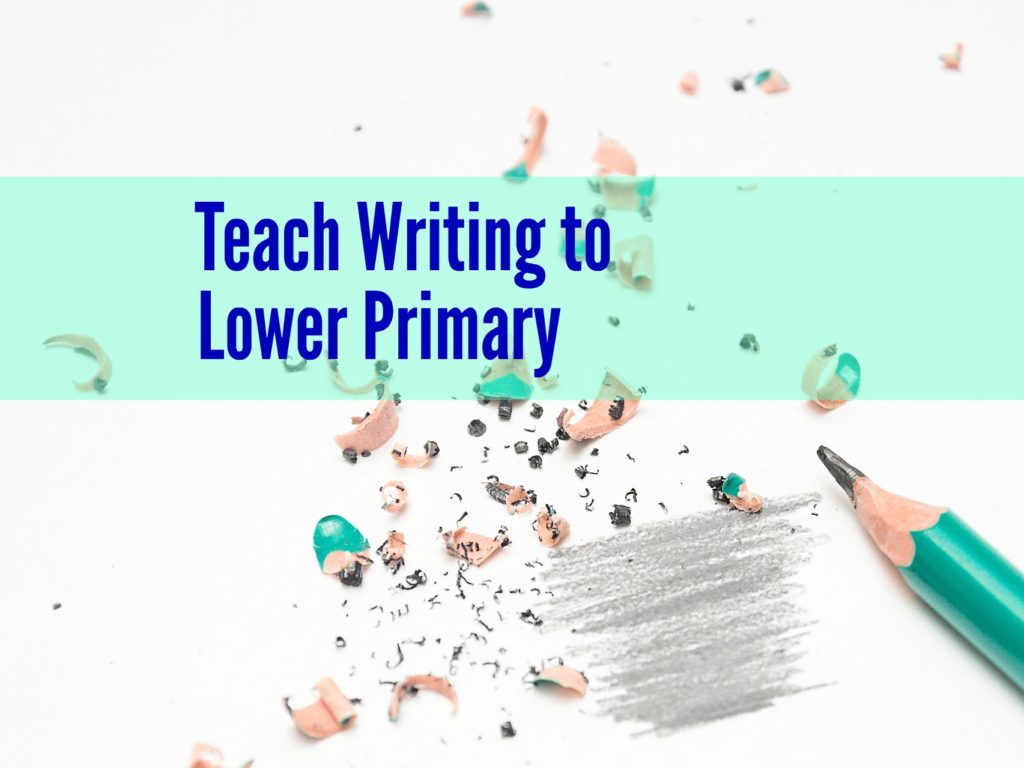

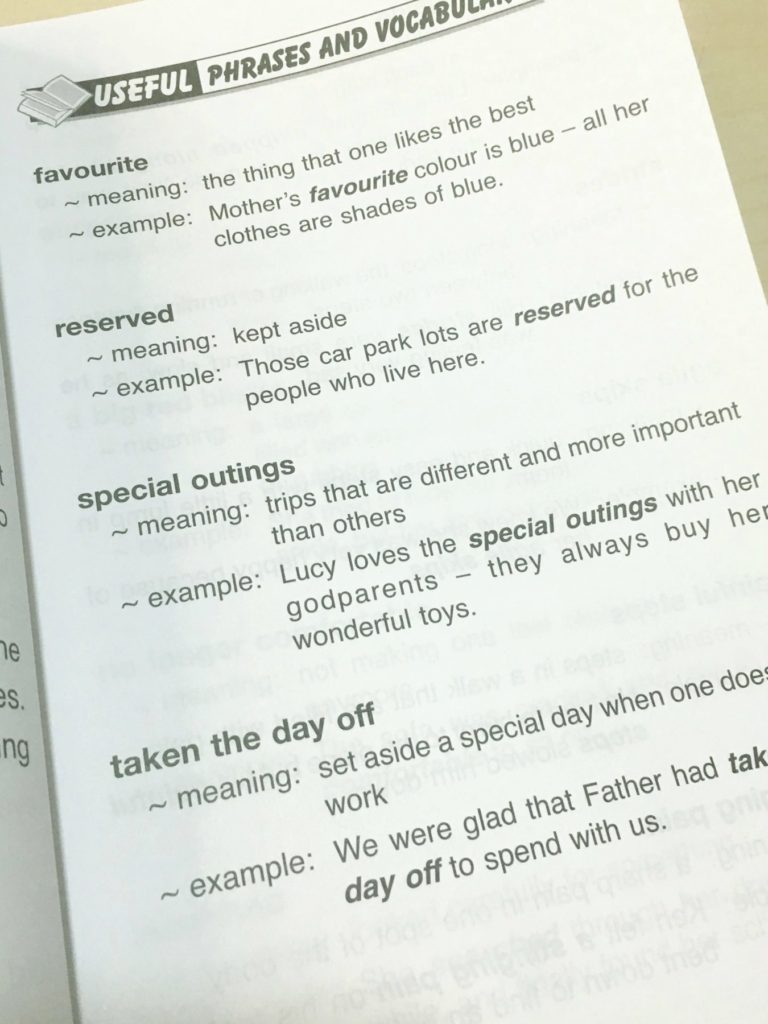
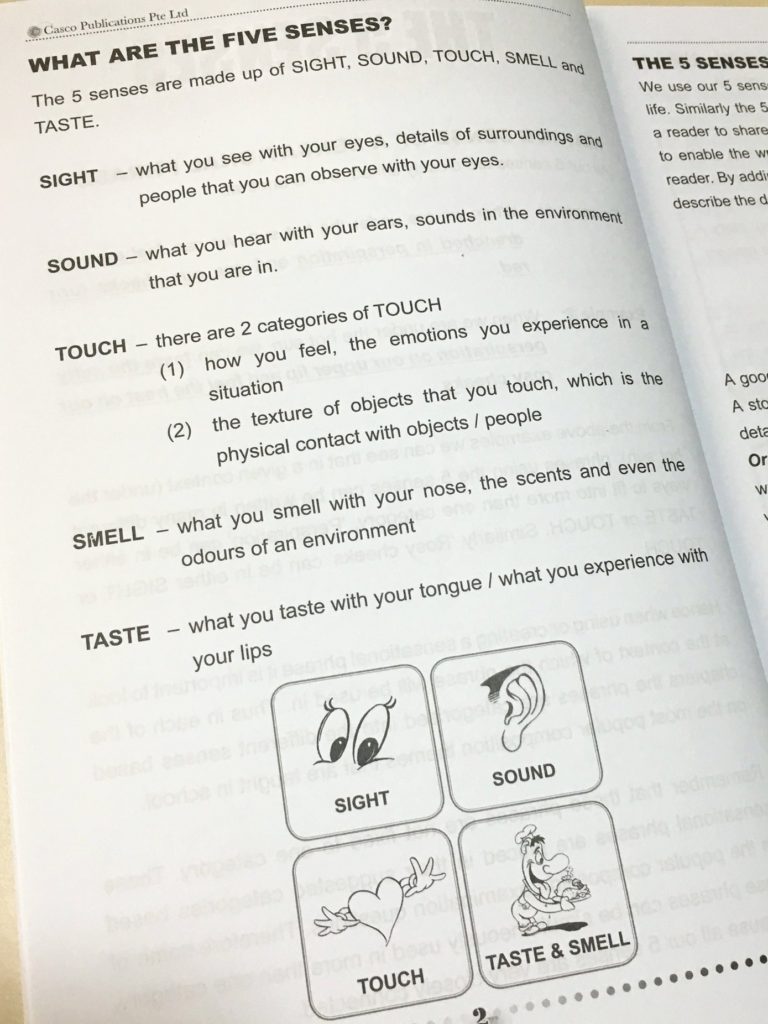
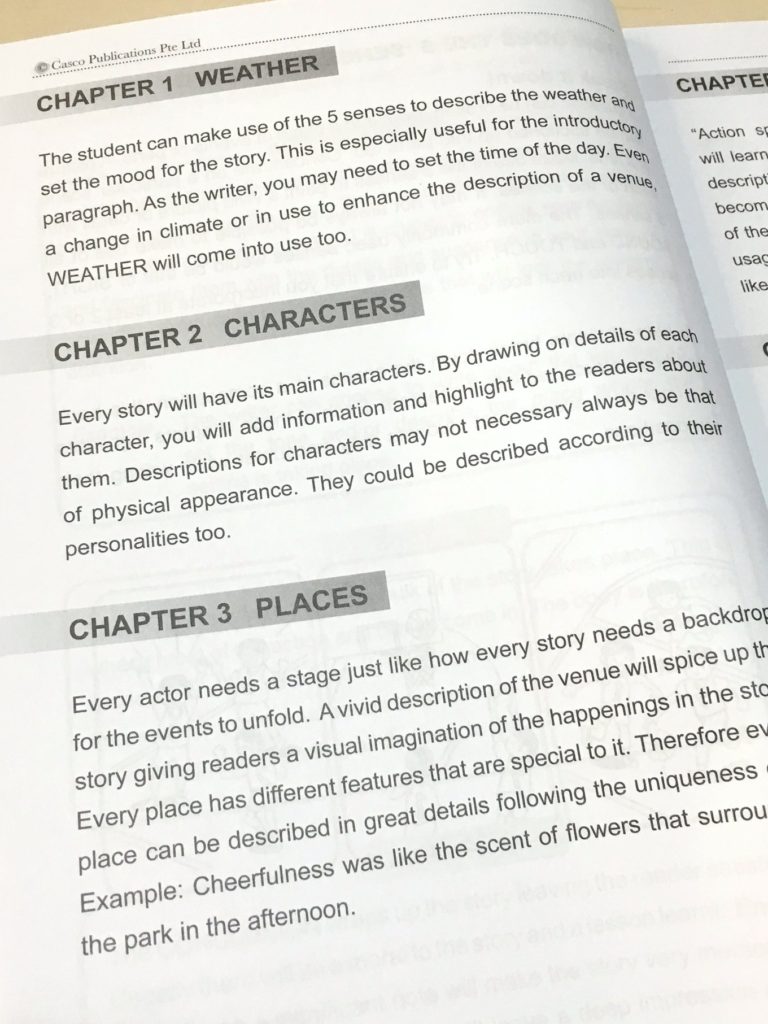
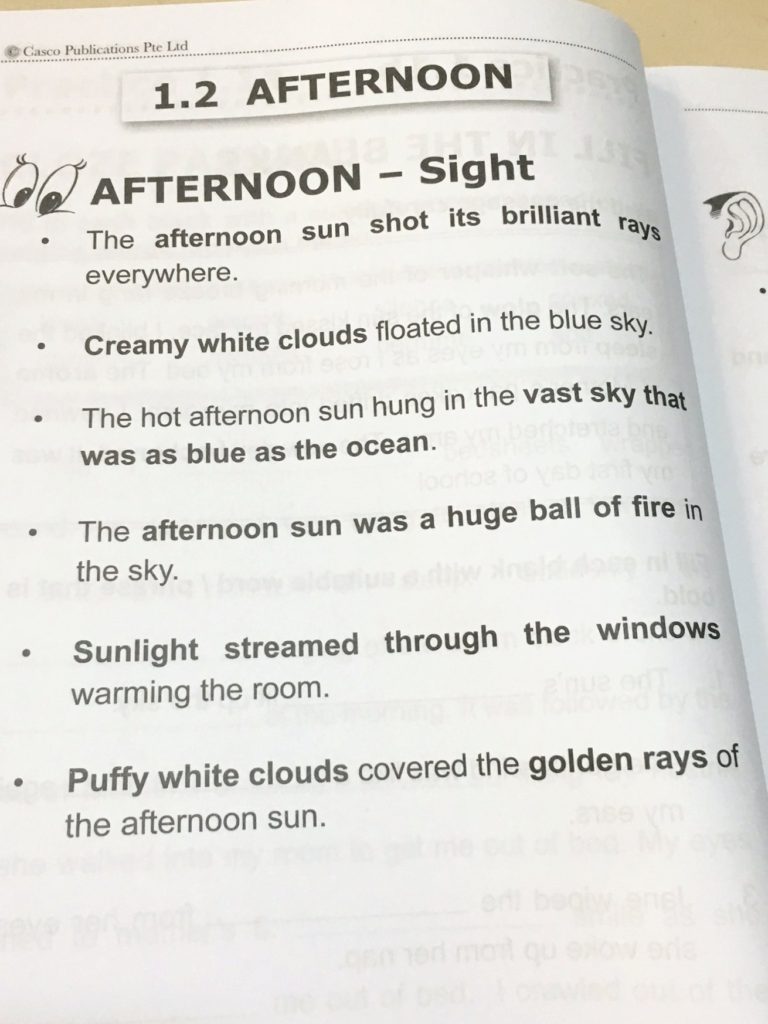


















Wow I haven’t really done much extra work with my girl at home other than revision of what she already does in her classes hehe… thanks for the resources. I need to get my butt moving more!
Ai @ Sakura Haruka
I read with great interest your journey and beliefs. Totally agree with the idea of using guides and references as a form of teaching. Guides and references are like little drawers and compartments in a closet. There are certain rules and expectations that guide us into understanding what we are likely to put into each compartment. But it does not stop us from using our creativity in what we choose to put in and how we arrange the items … Children need some initial principles to guide them to move forward, the rest of their journey is their tenacity, creativity and many other life ingredients all rolled into one. Just my humble opinions. Most Importantly, thanks for sharing, Susan!
Interesting analogy using drawers and compartments 🙂 Frankly I was in two minds about guides as I didn’t want her to be confined in her thinking but. But at the same time, if there is no reference, it is hard to show what a good piece of writing looks like. Thanks for dropping a comment.
[…] Teaching Writing to Lower Primary […]
[…] Teaching Writing to Lower Primary […]
[…] Teaching Writing to Lower Primary […]
[…] Teaching Writing to Lower Primary […]